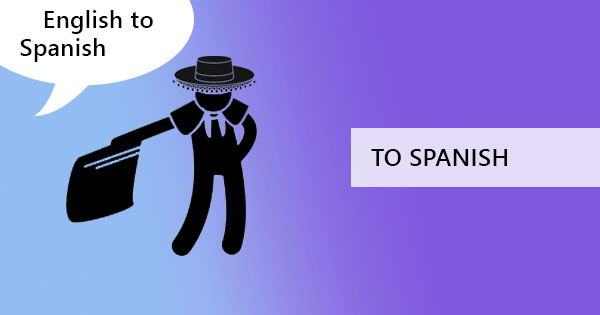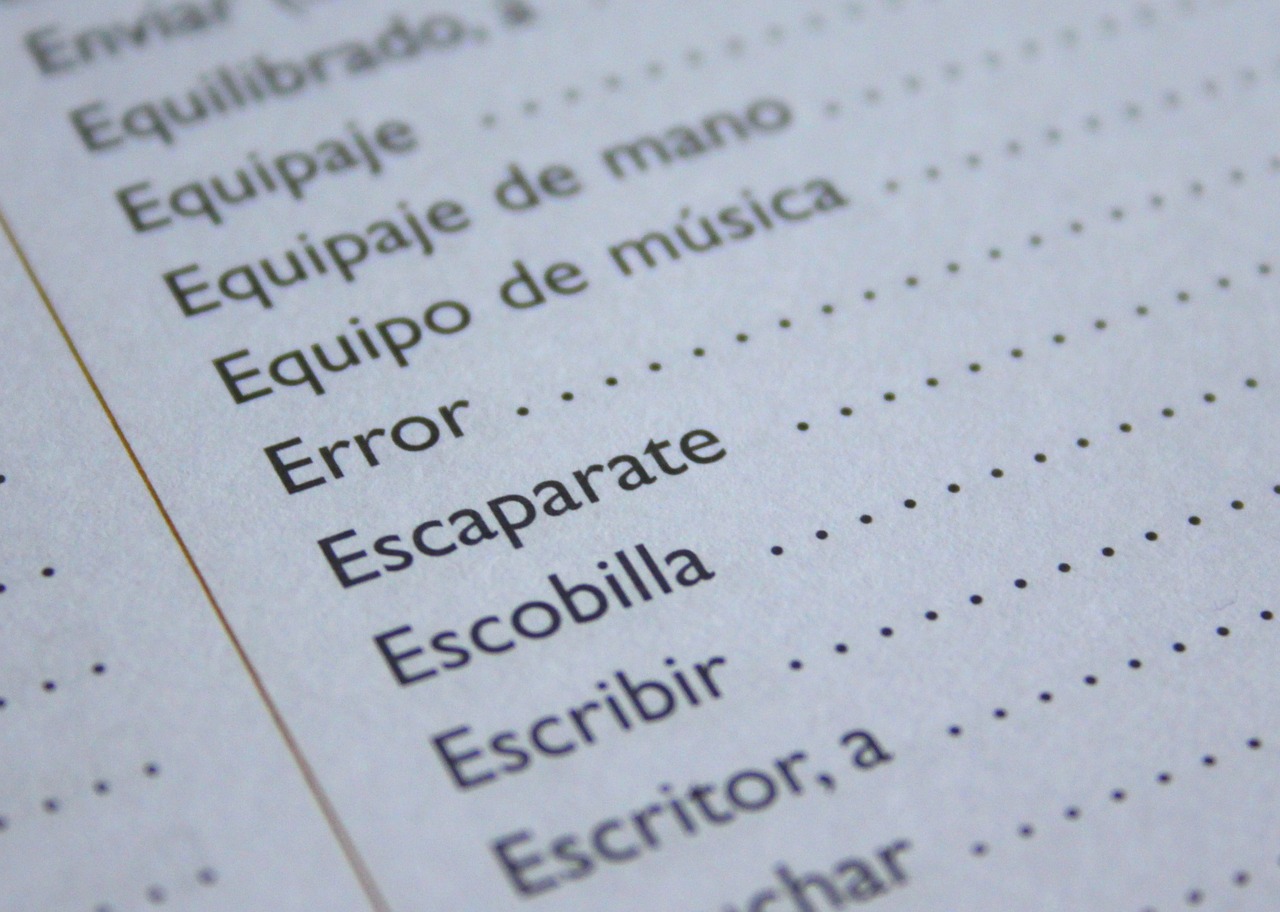
So, you’re stuck with a word file that you’ve been longing to convert into a PDF but you also want to translate that article into another language so that your foreign readers could understand it. The question is, what language will that be? Well, aside from English and Chinese (two most popular languages as of 2019), we highly suggest the language found in the third-place – Spanish.

What you should know about the Spanish language
The Spanish language has been widely used and learned by many. Since it is becoming popular, an increasing number of students have been studying this language. Many think it’s easy to learn this language but there are actually a few pointers that make it very confusing.
First of all, nouns have genders in the Spanish language. To make it even more confusing, some words have both genders. The rule in nouns is based on the vowels, assigning the proper article on it. Nouns are given articles but never possessed. By this, we mean there are no possessive nouns in Spanish. For instance, if you say “Mickey’s car” in English, then the noun is instantly possessive, right? In Spanish, “’s” is nonexistent so you add additional words and turn the sentence differently like “The car of Mickey.” Adjectives meanwhile are spoken after the noun. It becomes very confusing because, in the English language, the adjective comes before the noun.

In addition to these confusing rules, the language also has cultural factors in using words and phrases. One example is using the verb “to have” in Spanish. This simple phrase in English can simply mean to own but in Spanish, it can mean “I am” or “I’m feeling.”
Confused already? There’s more to it so don’t even try translating your document on your own. Here are more trivial facts about the Spanish language.
Trivia: Intriguing things about Spanish
It's not enough that we showed you the difference between English and Spanish. You’ve got to know these facts so you can actually appreciate the language.
Fact number one: Did you know that there are a lot of people speaking Spanish? Around 534 million people are currently doing so and its actually the fourth most spoken language around the world. Over the internet, Spanish is the third most used language, falling after English and Chinese language.
Fact number 2: Spanish is spoken in 21 different countries and they use it as their first and official language. Many of you may think that Spanish is only used in Spain but actually, it’s used also in Mexico, Colombia, Argentina, Peru, Venezuela, Chile, Ecuador, Guatemala, Cuba, Bolivia, Dominican Republic, Honduras, Paraguay, El Salvador, Nicaragua, Costa Rica, Puerto Rico, Panama, Uruguay, and Equatorial Guinea.
Fact number 3: Around 8% of the Spanish Dictionary derived from Arabic words. Not all are derived from Latin you see. Every language has an influence on another language. So how did this happen? Back in history, you will find that the Iberian Peninsula was conquered by Arabs and because of this, the language was greatly influenced even after the Arabs were gone.

Fact number 4: Their language is called “Castellano” or “Español” in their own tongue, not “Spanish.” What these two terms literally mean is “comes from Castilla/Spain.” Both terms are used often and can be interchanged.
Fact number 5: Increasing the number of students online and offline are taking Spanish lessons. On the internet alone, over 800% growth rate was seen in the use of Spanish online. The language is so popular that it became the first language expected to be used by 50% of the US population in 50 years.
Fact number 6: Since the English language also has an influence on the modern Spanish language, there are several words that are similar however, there are also various words in English and in Spanish that sound the same but actually have different meanings. These are called false cognates and can really get you in trouble! Here are some words that you’ll find really interesting:
|
Spanish |
Translation |
Sounds Like in English |
|
Preservativo |
Condom |
Preservative |
|
Constipacion |
Cold |
Constipation |
|
Molestar |
Annoy |
Molest |
|
Exito |
Success |
Exit |
|
Suceso |
What happened |
Success |
|
Embarazada |
Pregnant |
Embarrassed |
|
Bizarro |
Gallant |
Bizarre |
|
Decepcion |
Disappointment |
Deception |
|
Idioma |
Language |
Idiom |
|
Bombero |
Firefighter |
Bomber |
|
Codo |
Elbow |
Code |
|
Carpeta |
Folder |
Carpet |
|
Introducir |
Insert |
Introduce |
|
Fabrica |
Factory |
Fabric |
|
Enviar |
To send |
Envy |
|
Pie |
Foot |
Pie |
|
Lectura |
Read |
Lecture |
|
Compromiso |
Obligation |
Compromise |
|
Nudo |
Knot |
Nude |
|
Realizar |
Perform |
Realize |
|
Sopa |
Soup |
Soap |
|
Largo |
Long |
Large |
|
Chocar |
Punch |
Choke |
|
Asistir |
Attend |
Assist |
|
Recordar |
Remind |
Record |
|
Rapista |
Barber |
Rapist |
|
Actual |
Current |
Actual |
|
Contestar |
Answer |
Contest |
|
Ropa |
Clothes |
Rope |
|
Mantel |
Table cloth |
Mantel |
Facto number 7: If you use different articles/genders on some Spanish words, its meaning becomes different. Putting “el” or “la” changes the noun’s meaning. Here’s a list of words that has both genders (el / la).
|
Spanish with “El” |
Translation |
Spanish with “La” |
Translation |
|
El bateria |
Male drummer |
La betria |
Battery |
|
El frente |
Front |
La frente |
Forehead |
|
El guardia |
Policeman |
La guardia |
Protection |
|
El guia |
Guide |
La guia |
Guidebook |
|
El haz |
Light beam |
La haz |
Face |
|
El mañana |
Future |
La mañana |
morning |
|
El parte |
Document |
La parte |
Portion |
|
El papa |
Pope |
La papa |
Potato |
|
El radio |
Radius |
La radio |
Radio |
|
El tema |
Subject |
La tema |
Obsession |
|
El terminal |
Electrical terminal |
La terminal |
Shipping terminal |
|
El vista |
Customs officer |
La vista |
View |
|
El vocal |
Committee member |
La vocal |
Vowel |
|
El pendiente |
Earring |
La pendiente |
Slope |
|
El pez |
Fish |
La pez |
pitch |
|
El ordenanza |
Order |
La ordenanza |
orderly |
|
El cabeza |
Male in charge |
La cabeza |
Head |
|
el capital |
Investment |
La capital |
Capital city |
|
El circular |
Pie chart |
La circular |
Circular |
|
El coera |
Cholera |
La colera |
Anger |
|
El coma |
Coma |
La coma |
Comma |
|
El cometa |
Comet |
La cometa |
Kite |
|
El consonante |
Rhyme |
La consonante |
Consonant |
|
El contra |
Drawback |
La contra |
Antidote |
|
El corte |
Cut |
La corte |
Court |
|
El doblez |
Fold |
la doblez |
Double |
|
El editorial |
article |
La editorial |
publishing |
|
El escucha |
Guard |
La ecucha |
Listening |
|
El final |
End |
La final |
championship |
|
El busca |
Pager |
La busca |
search |
The Spanish language is very confusing but very popular so having tools like our PDF translator will make translating very easy for you. But if you’re still not convinced that Spanish is the right language for you, you can still convert them into another language with our tool here at DeftPDF.
How to convert your word and translate it in Spanish or another language
The process is easy to follow and fast to process. All you need to do is follow the simple steps as shown in the video. Tool link here: Translate to Spanish



